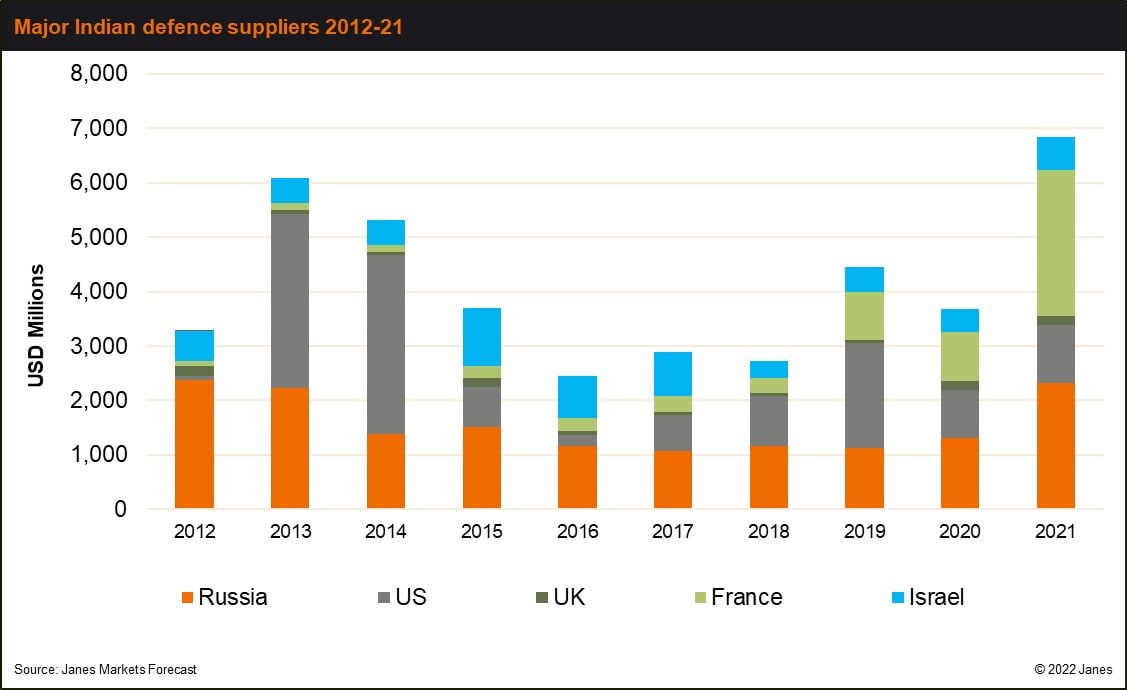
According to Janes data, Russia has been India's biggest defence supplier. (Janes Markets Forecast)
Russia's invasion of Ukraine has pushed the Indian government into a delicate situation, with mounting diplomatic pressure from the United States and its allies and Russia to take a clear stance in favour of one side.
Given its dependence on both the US and Russia for defence and security, New Delhi has been trying to strike a balance between them.
Although India has internationally condemned the ongoing violence in Ukraine – Prime Minister Narendra Modi has reached out to both Volodymyr Zelenskyy and Vladimir Putin to urge an end to the violence – the country has abstained from voting in the United Nations (UN) polls that intended to pass resolutions against the Russian attack.
Critics have described India's position to be ambiguous or dubious, calling for a stronger Indian stance against the Russian aggression in Ukraine. On the other hand, many have also supported India's decision to prioritise national interests and take a middle ground to not explicitly antagonise either the US or Russia. Since the beginning of the conflict, India has abstained from UN voting four times in polls held by the United Nations Security Council (UNSC), the United Nations Human Rights Council (UNHRC), and the United Nations General Assembly (UNGA).
Deepa Ollapally, research professor of international affairs and associate director of the Sigur Center for Asian Studies at George Washington University, told Janes that New Delhi “did not have much choice” in these votes given India's dependence on Russia for military hardware.
Looking to read the full article?
Gain unlimited access to Janes news and more...
